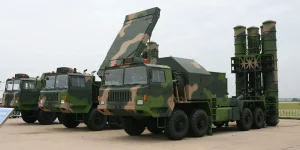- Views: 835
- Replies: 12

The global arms trade has undergone a dramatic transformation in recent years, with Russia experiencing a sharp decline in its military exports.
Between 2014-18 and 2019-23, Russian arms exports plummeted by 53%, highlighting the challenges faced by Russia's defence industry and signaling potential shifts in its global influence.
Diminishing Market Share
Russia's shrinking arms export market is evident in the drastic reduction of recipient states. While Russia exported major arms to 31 states in 2019, that number fell to a mere 12 by 2023.This decline underscores the difficulties Russia faces in maintaining its position as a leading arms supplier.
India's Shifting Dynamics
Historically, the Asia and Oceania region has been a major market for Russian arms. From 2019 to 2023, this region accounted for 68% of Russia's total arms exports.India has been the top importer of Russian arms (34%), followed by China (21%). However, India-Russia arms trade dynamics are changing.
Despite remaining India's largest supplier, this marks the first five-year period since 1960-64 in which India's imports from Russia or the Soviet Union accounted for less than half of its total arms purchases.
Factors Behind the Decline
Several factors play into Russia's declining arms exports and the evolving international arms market:- Competition: Countries like the United States, France, and Israel have risen as fierce competitors, offering cutting-edge military technology at competitive prices. This increased competition chips away at Russia's traditional market share.
- Geopolitical Tensions and Sanctions: International sanctions levied on Russia due to actions in Crimea and Eastern Ukraine act as serious roadblocks. These sanctions limit Russia's access to certain markets and hinder arms trade negotiations.
- Diversifying Suppliers: Countries like India, once heavily reliant on Russian imports, are actively seeking alternative suppliers. This diversification reduces dependence on any single arms exporter and fosters greater competition.
Conclusion
The substantial decrease in Russia's arms exports sends ripples through the global arms trade landscape.As nations diversify their sources for military hardware, Russia faces the challenge of adapting to increased competition and the limitations imposed by sanctions.
The continuous evolution of the market will undoubtedly shape the future of arms exports and geopolitical alliances.



